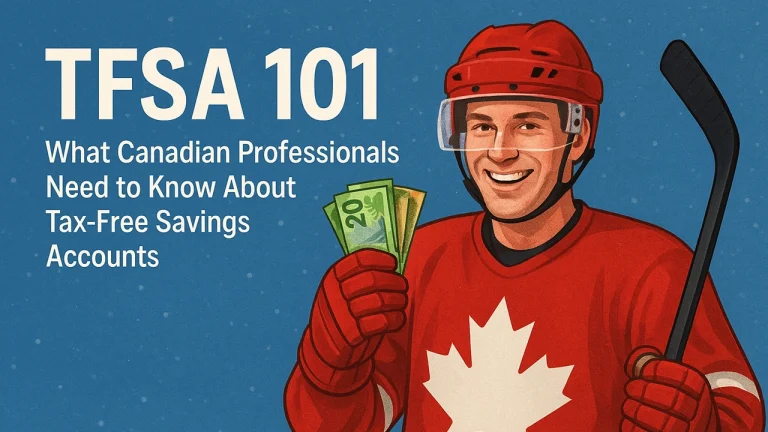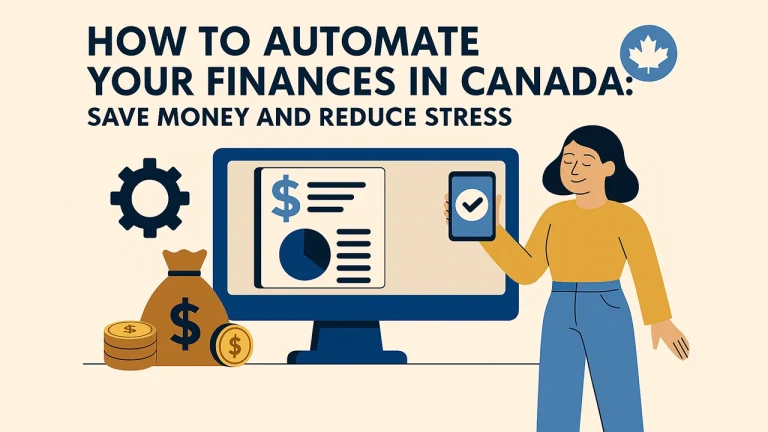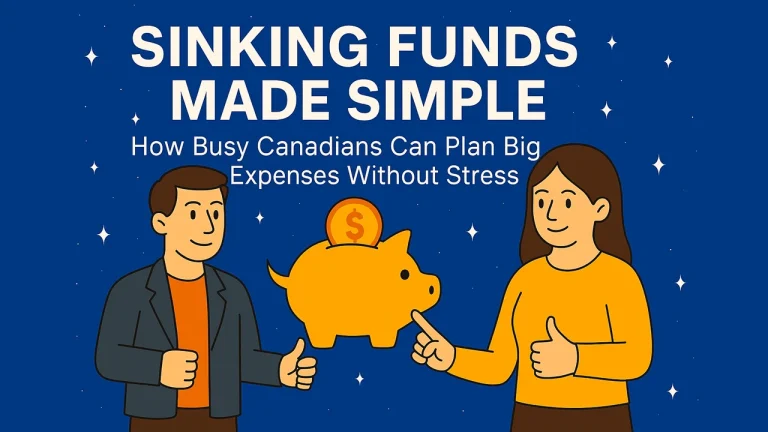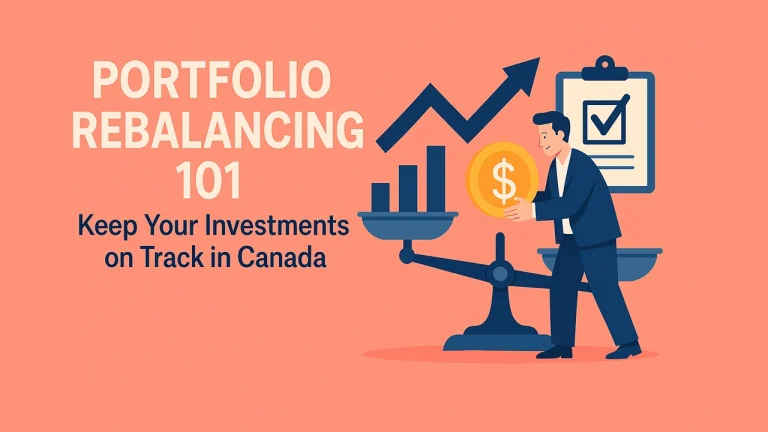TFSA vs RRSP: Which Should You Choose?
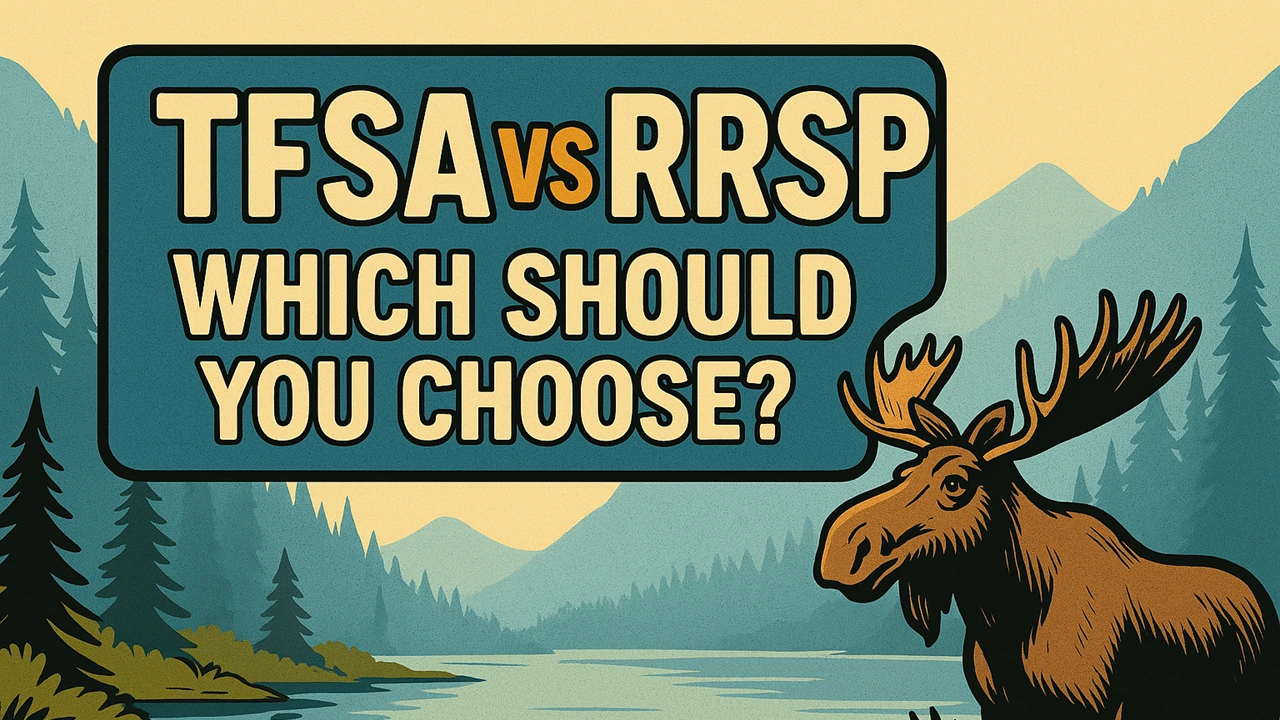
Wondering whether a tax-free savings account (TFSA) or registed retirement savings plan (RRSP) is the smarter place to grow your savings? Both accounts offer powerful tax advantages — but choosing the right one can save you thousands.
Whether you’re saving for retirement, a home, or just trying to reduce your tax bill, understanding how these accounts work is key to building long-term wealth.
In this guide, we’ll break down the key differences, help you choose the right account for your goals, and show why many Canadians use both.
Quick Summary
- 📊 Both TFSA and RRSP offer tax advantages — but they work differently
- 💼 RRSPs may be better if you expect to be in a lower tax bracket during retirement
- 🏦 TFSAs offer more flexibility and tax-free withdrawals at any time
- 👨💼 Your income, goals, and timeline all matter
- 🧩 Most Canadians will benefit from using both
What’s the Difference Between a TFSA and RRSP?
At a glance, both the Tax-Free Savings Account (TFSA) and the Registered Retirement Savings Plan (RRSP) are powerful tools that help Canadians save and invest while reducing taxes. But they work in very different ways — and understanding these differences is key to choosing the right one for your goals.
💡 Pro Tip
Ready to take a deeper dive into investing fundamentals?
📖 Explore our comprehensive Beginner’s Guide to Investing in Canada — built specifically for Canadian professionals.
Here’s a breakdown of the core differences:
1. Contributions 💰
- TFSA: Funded with after-tax income — no tax deduction when you contribute.
- RRSP: Contributions are tax-deductible, reducing your taxable income.
2. Tax Treatment of Growth 📈
- TFSA: All growth is completely tax-free, forever.
- RRSP: Growth is tax-deferred — you’ll pay tax when you withdraw.
3. Withdrawals 🏦
- TFSA: Withdraw anytime, tax-free. Withdrawn amounts are added back to your contribution room the following year.
- RRSP: Withdrawals are taxed as income. You permanently lose the contribution room when funds are withdrawn (except under special programs).
4. Contribution Limits and Deadlines 📅
- TFSA: Annual limit is the same for all Canadians. Contributions can be made at any time.
- RRSP: Limit depends on your income. Contributions must be made before the RRSP deadline to count for the previous tax year.
5. When to Use a TFSA vs an RRSP 🎯
- TFSA: Ideal for short- to medium-term goals, or if you value flexible access to your savings.
- RRSP: Best for long-term retirement savings — especially if you’re in a high income bracket today.
TFSA vs RRSP – Key Comparison
Sometimes, it’s easier to compare features side by side. Here’s a high-level snapshot of how a TFSA and RRSP stack up across the most important categories.
|
Category |
TFSA |
RRSP |
|---|---|---|
|
Contribution Type |
After-tax dollars – no tax deduction |
Pre-tax dollars – contributions reduce taxable income |
|
Tax on Investment Growth |
None (tax-free) |
Deferred (taxed upon withdrawal) |
|
Withdrawals |
Tax-free and flexible – you can take money out anytime |
Taxable as income – most withdrawals are fully taxed |
|
Contribution Limit |
Fixed annual limit, same for everyone; unused room carries forward |
Based on 18% of earned income, up to a yearly max; unused room carries forward |
|
Contribution Deadline |
No deadline – contribute anytime |
Annual deadline (usually early March) for previous year’s tax return |
|
Room Regained After Withdrawal |
Yes – added back the following year |
No – once withdrawn, room is lost |
|
Best For |
Emergency fund, short/medium-term goals, tax-free investing flexibility |
Retirement savings, income smoothing, maximizing tax refunds |
|
Age Limit |
None – available as long as you’re 18+ and a Canadian resident |
71 – must convert to a RRIF or annuity by end of year you turn 71 |
🧾 Contribution Type
TFSA: After-tax dollars – no tax deduction
RRSP: Pre-tax dollars – contributions reduce taxable income
📈 Tax on Investment Growth
TFSA: None – all gains are tax-free
RRSP: Tax-deferred – you’ll pay tax when you withdraw
💸 Withdrawals
TFSA: Tax-free and flexible – you can take money out anytime
RRSP: Taxable as income – most withdrawals are fully taxed
📊 Contribution Room
TFSA: Fixed annual limit, same for everyone; unused room carries forward
RRSP: Based on 18% of previous year’s earned income; unused room carries forward
📅 Contribution Deadline
TFSA: No deadline – contribute anytime
RRSP: Annual deadline (usually early March) to count for the previous tax year
🔄 Room Regained After Withdrawal
TFSA: Yes – room is added back the following calendar year
RRSP: No – once withdrawn, room is lost
🎯 Best For
TFSA: Emergency fund, short- and mid-term goals, flexible investing
RRSP: Long-term retirement savings, income smoothing, maximizing tax refunds
🎂 Age Limit
TFSA: None – available as long as you’re 18+ and a Canadian resident
RRSP: Must convert to a RRIF or annuity by December 31 of the year you turn 71
When to Use a TFSA vs an RRSP
While both accounts offer tax advantages, the best choice depends on your income, goals, and time horizon. Below are some common scenarios to help you decide which account might be more beneficial — or whether you should use both.
When a TFSA Might Be the Better Choice
You’re early in your career or earning a lower income
If you’re in a lower tax bracket now, contributing to an RRSP may not generate a significant refund. A TFSA lets you invest without locking in future tax obligations.
You want flexibility
Planning a major purchase, building an emergency fund, or unsure what life will throw at you? TFSA withdrawals are tax-free and can be recontributed later — ideal for changing goals.
You’re saving for something before retirement
Whether it’s a home down payment, parental leave, or starting a business, the TFSA gives you penalty-free access without triggering taxes.
You’ve maxed out your RRSP
Already hit your RRSP limit for the year? The TFSA is a great overflow account for continued tax-free investing.
When an RRSP Might Be the Better Choice
You’re in a higher income bracket
RRSP contributions reduce your taxable income — so if you’re earning a higher salary, this could mean a sizeable tax refund.
You expect to be in a lower tax bracket in retirement
Since RRSP withdrawals are taxed as income, you’ll benefit most if your income (and therefore tax rate) is lower in retirement than it is today.
You want to reduce taxes today
A big RRSP contribution can lower your taxable income and possibly reduce how much you owe — or increase your refund.
You have access to employer RRSP matching
If your employer offers matching contributions, it’s often best to take full advantage — it’s essentially free money.
Many Canadians Should Use Both
It doesn’t have to be either-or. Many professionals use a TFSA for short-term savings or flexibility, and an RRSP for long-term retirement growth and tax deferral.
A common approach is to:
- Prioritize an emergency fund in your TFSA
- Max out RRSP contributions if your income is high
- Use any remaining savings room in your TFSA for additional investments
💡 Pro Tip
Using TFSA and RRSP at the same time gives you both short-term savings and flexibility, and long-term retirement growth and tax deferral.
Decision Checklist For Choosing Between TFSA and RRSP
To figure out whether to use a TFSA or an RRSP, walk through this simple checklist:
Should You Use Both a TFSA and an RRSP?
Absolutely — for many Canadians, the smartest strategy isn’t choosing one over the other, but using both accounts in a complementary way. Each has its strengths, and together they can cover different stages of your financial life.
How TFSA and RRSP Work Together
Use your TFSA for flexibility and short-term goals
Ideal for emergency funds, travel savings, or investments you might need to access before retirement — without worrying about taxes or penalties.
Use your RRSP for long-term retirement savings
Great for maximizing tax refunds during high-income years and deferring income until retirement, when your tax rate is likely lower.
Withdraw from your TFSA first, when needed
Since TFSA withdrawals are tax-free and room is regained the following year, it’s a safer “first tap” for unexpected expenses.
Let your RRSP compound until retirement
Avoid early RRSP withdrawals to prevent losing contribution room and triggering taxable income unless it’s for the Home Buyers’ Plan (HBP) or Lifelong Learning Plan (LLP).
A Simple Strategy Many Canadians Follow
Here’s a basic tiered approach that balances both accounts:
- Build an emergency fund in your TFSA (3–6 months of expenses)
- Max out your RRSP contributions once you hit a moderate-to-high income level
- Continue investing in your TFSA once your RRSP is topped up — for added flexibility and long-term growth
Watch Out For
- Overcontributing to either account — it triggers penalties
- Withdrawing from your RRSP too early — it may bump you into a higher tax bracket
- Ignoring contribution limits — especially if you have multiple accounts (e.g., robo-advisors + discount brokers)
In short, combining both accounts gives you tax efficiency, investment flexibility, and strategic withdrawal options — all essential tools for building long-term financial security.
Conclusion
Choosing between a TFSA and an RRSP doesn’t have to be overwhelming. By understanding the strengths of each account, you can align your savings strategy with your income, goals, and stage of life.
Here’s a brief summary of the main points you’ve learned about:
- 🧠 TFSAs offer tax-free growth and flexible withdrawals, making them ideal for short-term goals and emergency savings.
- 💰 RRSPs provide immediate tax deductions and are best suited for long-term retirement planning, especially if you’re in a higher tax bracket.
- 🔄 Contribution rules, withdrawal penalties, and age limits differ — knowing the mechanics helps avoid costly mistakes.
- 🧮 Your current income and expected future tax rate are key to deciding where to contribute first.
- 🤝 Most Canadians benefit from using both accounts as part of a well-rounded savings and investing strategy.
With the right mix of TFSA and RRSP contributions, you can build a tax-efficient, flexible financial plan — one that grows with you, not against you.


